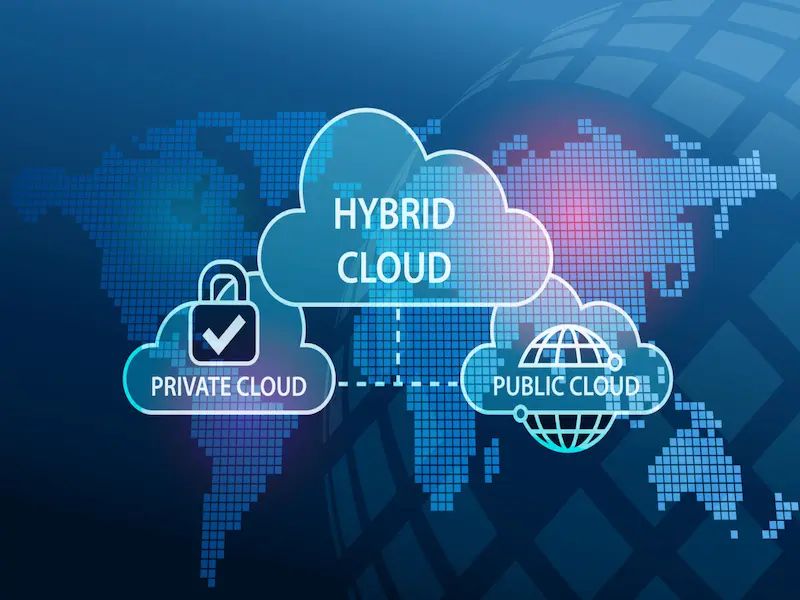- The hybrid cloud deployment model combines on-premises infrastructure with public and private cloud services, providing flexibility and scalability.
- Organisations can run sensitive workloads in a private cloud while leveraging public cloud resources for less critical applications or burst capacity.
- Hybrid cloud solutions enable better resource management, cost-effectiveness, and improved disaster recovery options.
Tthe hybrid cloud deployment model has emerged as a compelling solution in this era where businesses increasingly depend on technology to drive growth and innovation. This approach seamlessly integrates traditional on-premises infrastructure with cloud resources, offering organisations the flexibility to optimise their operations.
By navigating the complexities of data management and application deployment, companies can take advantage of both private and public clouds, ensuring that they meet their unique business needs while staying competitive in a fast-paced market.
Definition of hybrid cloud
At its core, hybrid cloud computing combines the best elements of public and private clouds. A private cloud is dedicated to a single organisation, offering enhanced security and control over sensitive data and applications. In contrast, a public cloud is shared among multiple users, providing scalability and cost efficiency. The hybrid cloud model enables organisations to maintain sensitive workloads on private infrastructure while taking advantage of the flexibility and scalability offered by public cloud providers like AWS, Microsoft Azure, or Google Cloud.
Also read: What is hybrid cloud migration?
Also read: The future of cloud computing: Exploring hybrid cloud
Benefits of hgybrid cloud
Flexibility and scalability: One of the primary advantages of the hybrid cloud is its inherent flexibility. Organisations can scale their resources according to demand, shifting workloads between private and public clouds as needed. This adaptability allows businesses to respond quickly to changing market conditions and customer demands without incurring unnecessary costs.
Cost efficiency: By leveraging public cloud resources for non-sensitive workloads, organisations can reduce the costs associated with maintaining extensive on-premises infrastructure. Companies can also benefit from pay-as-you-go pricing models offered by cloud providers, ensuring they only pay for the resources they use.
Enhanced security and compliance: For industries that are heavily regulated, such as finance and healthcare, maintaining compliance with data protection laws is critical. The hybrid cloud model allows organisations to keep sensitive data within a private cloud, where they have greater control over security measures. At the same time, they can utilise public cloud resources for less sensitive tasks, effectively balancing risk and operational efficiency.
Use cases for hybrid cloud
Organisations across various sectors are adopting hybrid cloud strategies to optimise their operations. For example, a retail company might host its e-commerce platform in a public cloud to handle fluctuating traffic during peak shopping seasons, while keeping customer payment information secured in a private cloud. Similarly, a healthcare provider may store patient records in a private cloud to comply with HIPAA regulations while using public cloud services for data analytics to improve patient care.
Challenges to consider
While the hybrid cloud model offers numerous advantages, there are challenges that organisations must address. Managing multiple environments can lead to complexity, requiring robust governance and monitoring tools to ensure seamless integration. Additionally, organisations must consider data transfer costs and potential latency issues when moving workloads between clouds. Lastly, establishing clear policies and protocols for security and compliance is essential to mitigate risks associated with data breaches.

